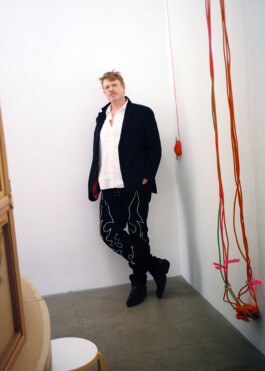
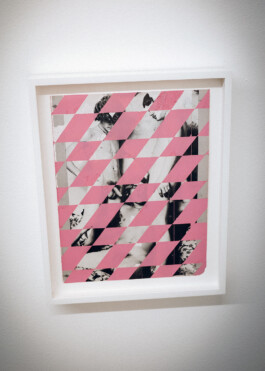
High Noon
From McQueen to Nike to NOON Projects, Ryan Noon has built a practice where art, design, and community overlap. A curator, maker, and mentor, he’s rethinking what a gallery can be – a space that feels lived-in, generous, and grounded, where beauty, conversation, and collaboration all hold equal weight.
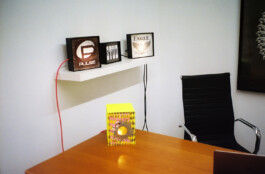
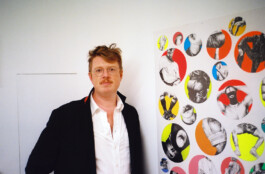
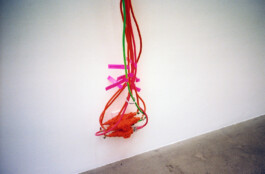
When you were fifteen and launched your first clothing label – what did you imagine your future creative world would look like then, and how much of that world has become real (or transformed)?
At fifteen, the internet wasn’t the distraction or mind-control machine it can be today, so I was able to grow and sustain a healthy imagination. I lived just far enough outside a city to know enough, but not too much. I spent hours at the town library, made art, shot films, staged photoshoots with my friends, and ran my first fashion line, Faux Couture.
I was lucky to have incredible mentors in the small town I grew up in: Denise Minnard, my high school Spanish teacher, who I’m still close with today; illustrator Elizabeth Bennett, who lived in New York in the 1970s, drew cadavers, illustrated for Time and Playboy, and inspired me tremendously; and Jon Gould, Andy Warhol’s partner, who passed away from AIDS but whose family foundation awarded me a college scholarship. I think he’d be proud of the work I’m doing now. These experiences gave me an early taste of culture and creativity beyond my rural upbringing, while my family kept me grounded.
When I pictured my future creative world, I imagined working closely with artists, traveling, hosting fun parties, and being surrounded by culture – a bit like Auntie Mame. Today, I’m fortunate to collaborate with artists daily and have meaningful conversations about art and society. I’m inspired by how artists live in the here and now, transforming nothing into something, and I try to do the same. Most days, I feel like I’m living in some version of Warhol’s Factory – only healthier and more sustainable – which is pretty close to the world I dreamed of as a teenager.
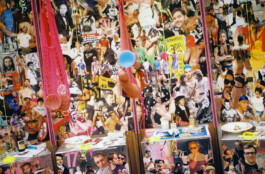
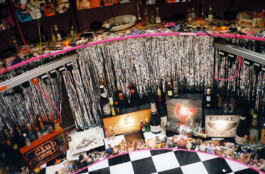
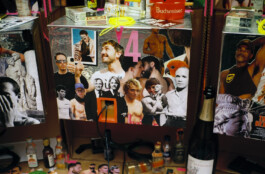
Yuval Pudik: The Hom(o)stead Act: Kaiserpanorama
Yuval Pudik: The Hom(o)stead Act: Kaiserpanorama
Yuval Pudik: The Hom(o)stead Act: Kaiserpanorama
“Most days, I feel like I’m living in some version of Warhol’s Factory – only healthier and more sustainable.”
In your journey from print and textile design for Alexander McQueen, through the Blue Ribbon Studio innovation lab at Nike, to curating in gallery spaces – what idea keeps resurfacing, no matter the medium or context?
The common thread is always collaborating with and learning from great people. Creative work itself is laborious and intense, but collaborating with incredible, diverse, and trustworthy people makes it exciting and meaningful.
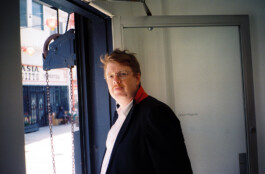
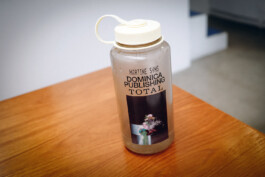
There’s a tension between the ephemeral (performance, sound, community gathering) and the permanent (object, exhibition, collection). How do you hold both in balance at NOON Projects?
So many great conceptual art movements centered around a physical location: the Pre-Raphaelites met in the same pub, Warhol had the Factory, the Manchester club scene had the Hacienda. Having a physical gallery space is very important to me, and it’s important that the space feels welcoming. When I opened the gallery, I built two benches myself – one for outside, one for inside. I wanted the architecture to invite you in and make you feel like you’re supposed to be there. I’ve always been drawn to objects, things of beauty that hold memory and emotion. I think of programming and performances like water in a fountain or air in the lungs – they animate the space and contextualize the program, creating opportunities for people who might not otherwise feel welcome.
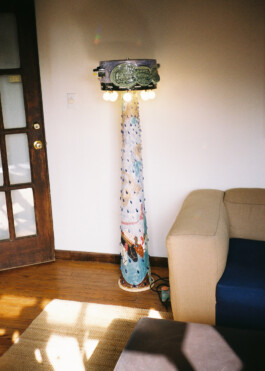
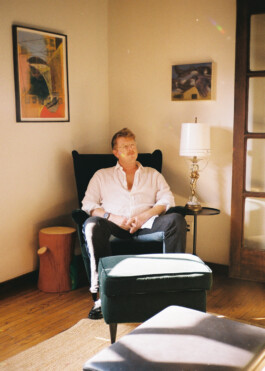
Opening up your own house for an exhibition feels both intimate and risky – what made you decide to blur the line between private space and public gallery?
All of the artists I work with want their work to be lived with, not stored away on collectors' racks. I wanted to create a show to see what it’s like to have work on the walls of a home and experience art outside the white cube. I hoped that by opening my home, it would create a space for more intimate conversations, house concerts, dinners, and opportunities to show collectors what it means to live with art. I think anyone who visited appreciated the gesture – it’s often the simplest acts of generosity that go the longest way.
“I’ve always been drawn to objects – things of beauty that hold memory and emotion.”
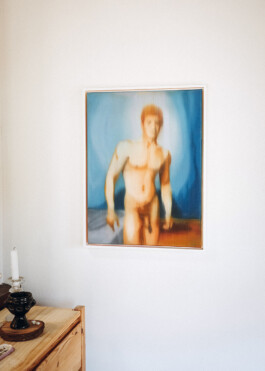
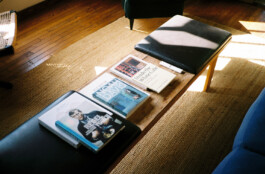
How did the artists respond to showing work in a domestic setting – did it change what they made, or how they thought about display?
The domestic setting naturally encouraged artists to think about intimacy, scale, and how people engage with their work in everyday life. It invited a slower, more personal connection between artist, object, and viewer.
If you could invite one artist, past or present, to a conversation in your gallery space, who would it be, and what would you want to ask them?
I’d ask Sarah Lucas and Tal R to the gallery and invite them each to do a show. Both artists are huge inspirations and mentors of mine; I’d love to see what kind of show they’d make in a smaller space, outside the big institutions and galleries they usually work with. To me, they both embody the raw spirit of what it means to be an artist, and it would be an honour to show their work.
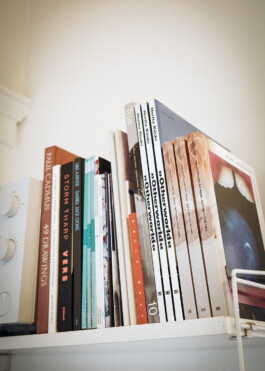
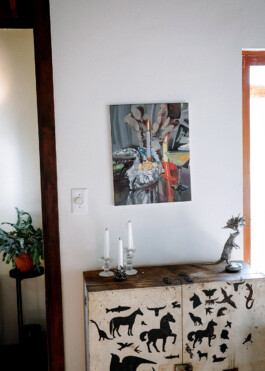
Running a gallery in Los Angeles – with its sprawl, its competition, its shifting market – what does survival look like right now? And how do you see the role of the gallery evolving?
Los Angeles was never on my radar, but every time I visited, I found it welcoming. Since relocating here in 2021, I’ve found the community incredibly supportive and collaborative. The market is unpredictable at the moment, so my approach is to double down on working only with artists I believe in wholeheartedly. I take my time to present strong shows, keep them up longer, and commit to knowing the work inside and out, with both head and heart.
I also encourage artists to find ways of supporting themselves outside of sales, because relying solely on the market places too much pressure on both the artist and the work. I hold myself to the same principle by continuing to consult as a creative director, curator, and program director. That balance allows the gallery to grow sustainably and stay true to its values, regardless of market swings.
“I want the gallery to feel like a free museum within the context of a commercial space – welcoming, accessible, and well-programmed.”
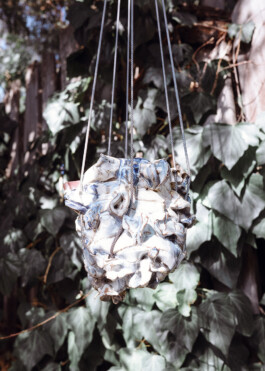
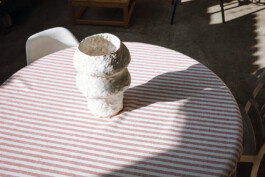
What are you still curious about, still restless for, in your work – what horizon are you chasing right now, that you haven’t quite reached yet?
I’m chasing the dream of running a sustainable gallery that presents thoughtful, powerful exhibitions while supporting artists, the community, and myself. I want the gallery to feel like a free museum within the context of a commercial space – welcoming, accessible, and well-programmed – because that’s how I first learned about art: by overlooking unfriendly gallery staff and approaching galleries as if they were museums.
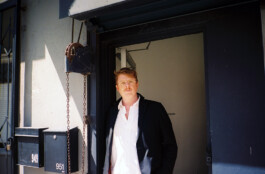
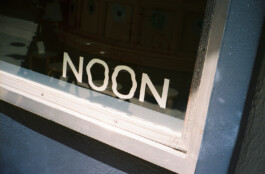

High Noon

From McQueen to Nike to NOON Projects, Ryan Noon has built a practice where art, design, and community overlap. A curator, maker, and mentor, he’s rethinking what a gallery can be – a space that feels lived-in, generous, and grounded, where beauty, conversation, and collaboration all hold equal weight.



When you were fifteen and launched your first clothing label – what did you imagine your future creative world would look like then, and how much of that world has become real (or transformed)?
At fifteen, the internet wasn’t the distraction or mind-control machine it can be today, so I was able to grow and sustain a healthy imagination. I lived just far enough outside a city to know enough, but not too much. I spent hours at the town library, made art, shot films, staged photoshoots with my friends, and ran my first fashion line, Faux Couture.
I was lucky to have incredible mentors in the small town I grew up in: Denise Minnard, my high school Spanish teacher, who I’m still close with today; illustrator Elizabeth Bennett, who lived in New York in the 1970s, drew cadavers, illustrated for Time and Playboy, and inspired me tremendously; and Jon Gould, Andy Warhol’s partner, who passed away from AIDS but whose family foundation awarded me a college scholarship. I think he’d be proud of the work I’m doing now. These experiences gave me an early taste of culture and creativity beyond my rural upbringing, while my family kept me grounded.
When I pictured my future creative world, I imagined working closely with artists, traveling, hosting fun parties, and being surrounded by culture – a bit like Auntie Mame. Today, I’m fortunate to collaborate with artists daily and have meaningful conversations about art and society. I’m inspired by how artists live in the here and now, transforming nothing into something, and I try to do the same. Most days, I feel like I’m living in some version of Warhol’s Factory – only healthier and more sustainable – which is pretty close to the world I dreamed of as a teenager.



Yuval Pudik: The Hom(o)stead Act: Kaiserpanorama
Yuval Pudik: The Hom(o)stead Act: Kaiserpanorama
Yuval Pudik: The Hom(o)stead Act: Kaiserpanorama
“Most days, I feel like I’m living in some version of Warhol’s Factory – only healthier and more sustainable.”
In your journey from print and textile design for Alexander McQueen, through the Blue Ribbon Studio innovation lab at Nike, to curating in gallery spaces – what idea keeps resurfacing, no matter the medium or context?
The common thread is always collaborating with and learning from great people. Creative work itself is laborious and intense, but collaborating with incredible, diverse, and trustworthy people makes it exciting and meaningful.


There’s a tension between the ephemeral (performance, sound, community gathering) and the permanent (object, exhibition, collection). How do you hold both in balance at NOON Projects?
So many great conceptual art movements centered around a physical location: the Pre-Raphaelites met in the same pub, Warhol had the Factory, the Manchester club scene had the Hacienda. Having a physical gallery space is very important to me, and it’s important that the space feels welcoming. When I opened the gallery, I built two benches myself – one for outside, one for inside. I wanted the architecture to invite you in and make you feel like you’re supposed to be there. I’ve always been drawn to objects, things of beauty that hold memory and emotion. I think of programming and performances like water in a fountain or air in the lungs – they animate the space and contextualize the program, creating opportunities for people who might not otherwise feel welcome.


Opening up your own house for an exhibition feels both intimate and risky – what made you decide to blur the line between private space and public gallery?
All of the artists I work with want their work to be lived with, not stored away on collectors' racks. I wanted to create a show to see what it’s like to have work on the walls of a home and experience art outside the white cube. I hoped that by opening my home, it would create a space for more intimate conversations, house concerts, dinners, and opportunities to show collectors what it means to live with art. I think anyone who visited appreciated the gesture – it’s often the simplest acts of generosity that go the longest way.
“I’ve always been drawn to objects – things of beauty that hold memory and emotion.”


How did the artists respond to showing work in a domestic setting – did it change what they made, or how they thought about display?
The domestic setting naturally encouraged artists to think about intimacy, scale, and how people engage with their work in everyday life. It invited a slower, more personal connection between artist, object, and viewer.
If you could invite one artist, past or present, to a conversation in your gallery space, who would it be, and what would you want to ask them?
I’d ask Sarah Lucas and Tal R to the gallery and invite them each to do a show. Both artists are huge inspirations and mentors of mine; I’d love to see what kind of show they’d make in a smaller space, outside the big institutions and galleries they usually work with. To me, they both embody the raw spirit of what it means to be an artist, and it would be an honour to show their work.


Running a gallery in Los Angeles – with its sprawl, its competition, its shifting market – what does survival look like right now? And how do you see the role of the gallery evolving?
Los Angeles was never on my radar, but every time I visited, I found it welcoming. Since relocating here in 2021, I’ve found the community incredibly supportive and collaborative. The market is unpredictable at the moment, so my approach is to double down on working only with artists I believe in wholeheartedly. I take my time to present strong shows, keep them up longer, and commit to knowing the work inside and out, with both head and heart.
I also encourage artists to find ways of supporting themselves outside of sales, because relying solely on the market places too much pressure on both the artist and the work. I hold myself to the same principle by continuing to consult as a creative director, curator, and program director. That balance allows the gallery to grow sustainably and stay true to its values, regardless of market swings.
“I want the gallery to feel like a free museum within the context of a commercial space – welcoming, accessible, and well-programmed.”


What are you still curious about, still restless for, in your work – what horizon are you chasing right now, that you haven’t quite reached yet?
I’m chasing the dream of running a sustainable gallery that presents thoughtful, powerful exhibitions while supporting artists, the community, and myself. I want the gallery to feel like a free museum within the context of a commercial space – welcoming, accessible, and well-programmed – because that’s how I first learned about art: by overlooking unfriendly gallery staff and approaching galleries as if they were museums.

